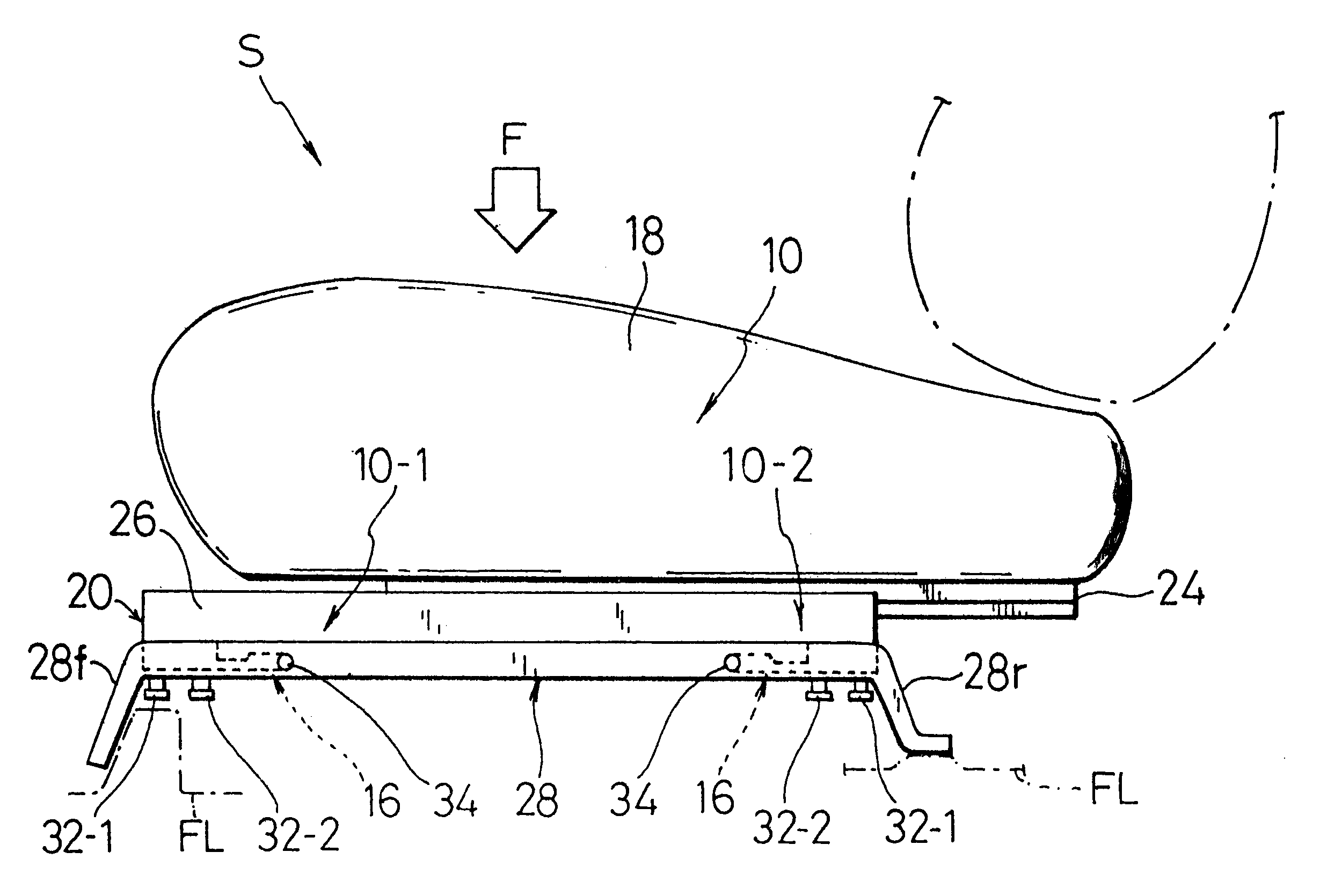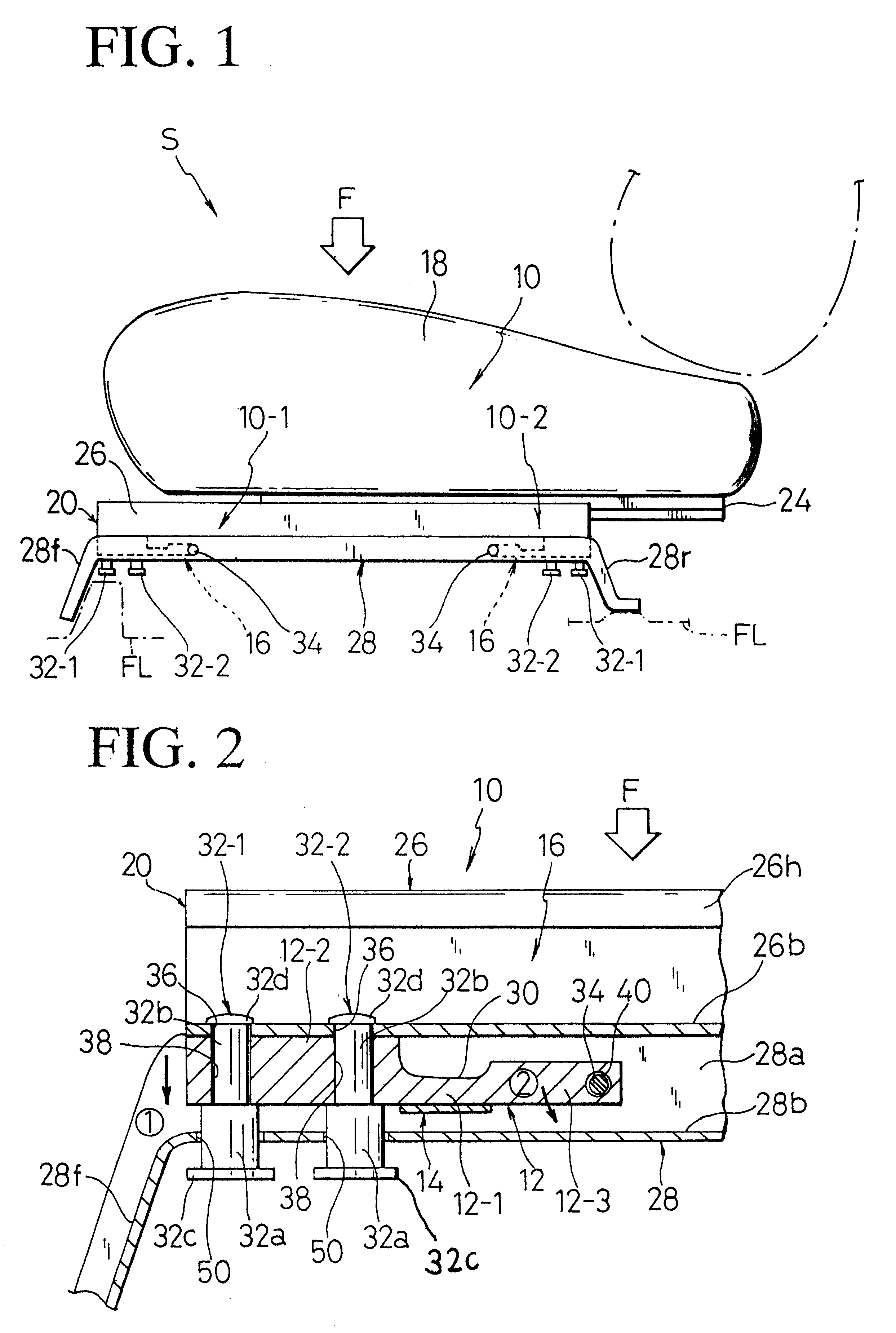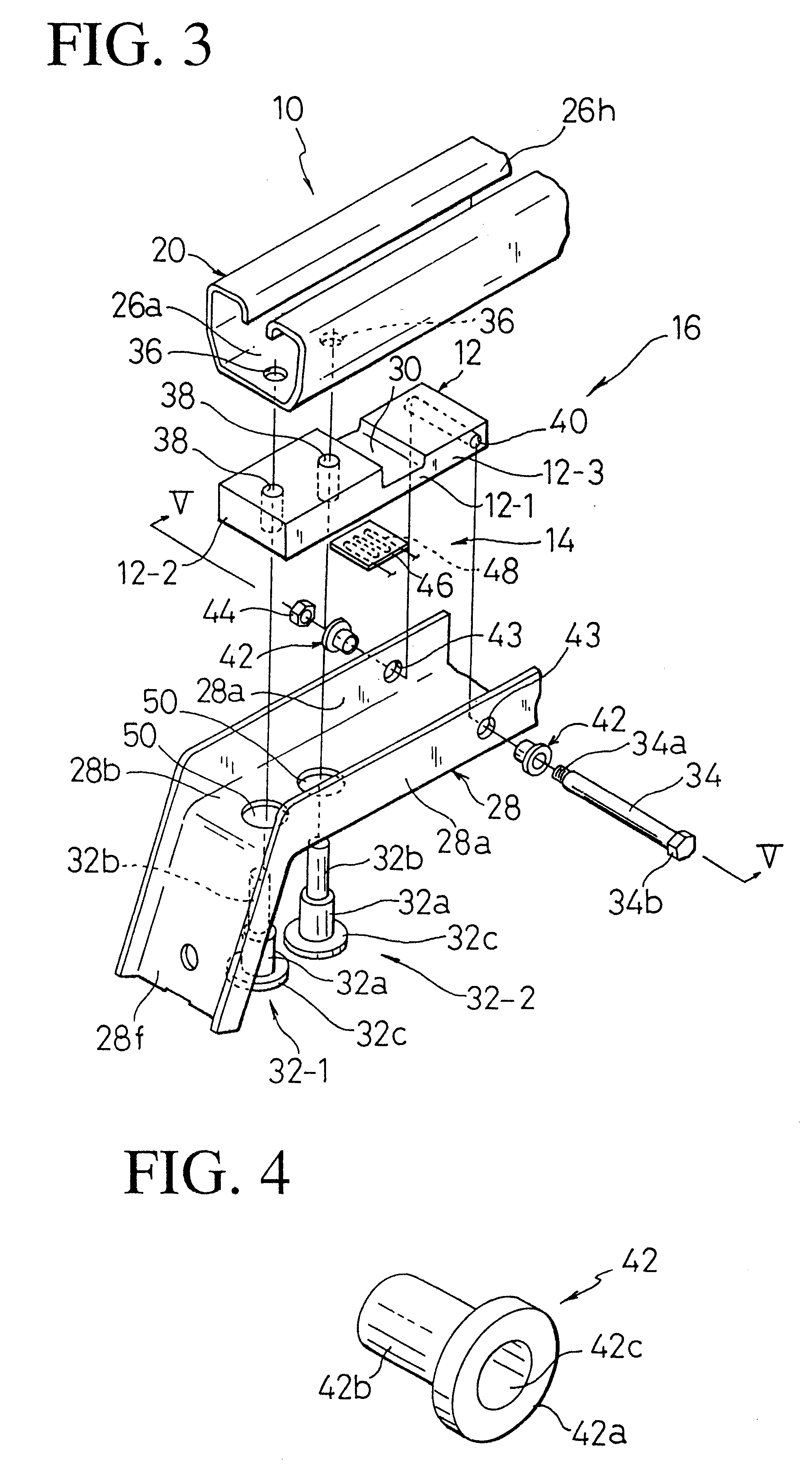Load detection structure for vehicle seat
a technology for vehicle seats and loading devices, applied in the direction of instruments, force/torque/work measurement apparatuses, tractors, etc., can solve the problems of seat size increase, seat vertical size, and prior art is neither realistic nor practical in assembling optimal mechanical structures
- Summary
- Abstract
- Description
- Claims
- Application Information
AI Technical Summary
Benefits of technology
Problems solved by technology
Method used
Image
Examples
Embodiment Construction
Referring to FIGS. 1 through 6, there is illustrated one preferred mode of load detection structure applicable to a vehicle seat in accordance with the present invention. Reference is first made to FIG. 1 in which designation (10) generally represents a load detection structure provided between a slide rail device (20) and a support leg member (28) in a novel simplified manner.
As is known, the slide rail device (20) comprises a stationary lower rail (26) to be fixed on a floor (FL) of a vehicle (not shown) and a movable upper rail (24) slidably fitted in and along the longitudinal slit (26h) of the lower rail (26). The typical configuration of such slide rail device (20) is shown in the figures, wherein the movable upper rail (24) has generally inverted-T-shaped base portion slidably accommodated within the lower rail (26) via steel balls and rollers (not shown). As seen from FIG. 1, the upper rail (24) is fixedly attached to a seat cushion (18) of a vehicle seat (S) whereas the low...
PUM
| Property | Measurement | Unit |
|---|---|---|
| diameter | aaaaa | aaaaa |
| weight | aaaaa | aaaaa |
| total weight | aaaaa | aaaaa |
Abstract
Description
Claims
Application Information
 Login to View More
Login to View More - R&D
- Intellectual Property
- Life Sciences
- Materials
- Tech Scout
- Unparalleled Data Quality
- Higher Quality Content
- 60% Fewer Hallucinations
Browse by: Latest US Patents, China's latest patents, Technical Efficacy Thesaurus, Application Domain, Technology Topic, Popular Technical Reports.
© 2025 PatSnap. All rights reserved.Legal|Privacy policy|Modern Slavery Act Transparency Statement|Sitemap|About US| Contact US: help@patsnap.com



